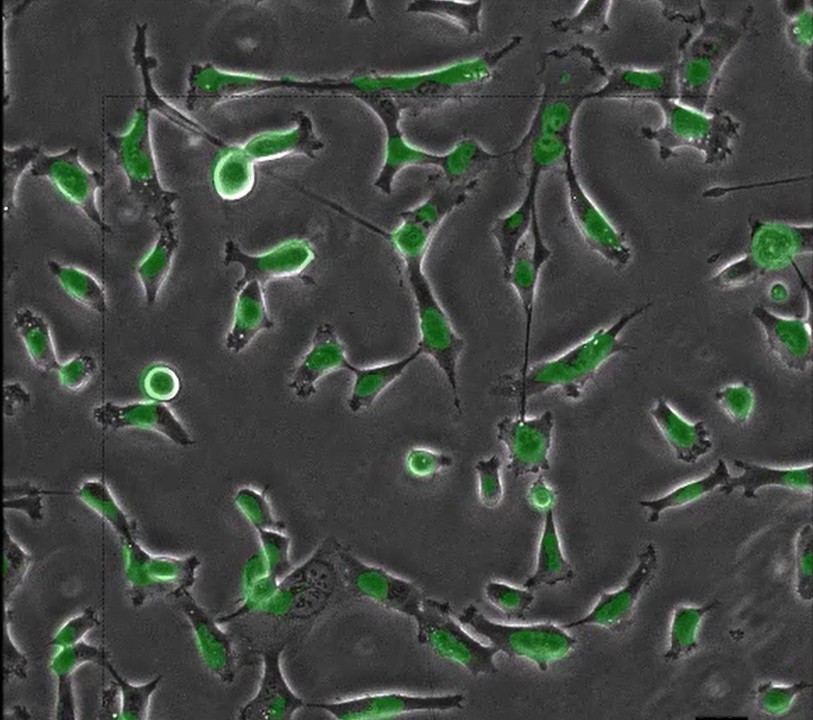Live Cell Imaging
Chris Shumate, CEO
Live Cell Imaging
Live cell imaging began with the invention of the inverted microscope, which allowed cells growing under media to be imaged on the bottom of labware. Flasks, Petri dishes and microplates became popular for propagating and expanding immortalized cell lines and even primary cells for research.
Fluorescence Live Cell Imaging
The introduction of fluorescent proteins greatly enabled fluorescence microscopy of living cells. Prior to this, a limited number of chemical stains that labeled structures inside cells without causing harm were available. Fluorescent proteins are used by linking their encoding gene to the gene encoding a protein of interest. The chimeric DNA is transfected into cells using one of multiple transfection methods available. This has allowed many important proteins and structures to be directly followed within living cells.
Another challenge was performing periodic imaging to produce time-lapse videos of live cell behavior. This required the labware to be removed from the incubator, placed on a traditional inverted microscope for acquiring an image, and returned to the incubator, all repeated at every time point. Not surprising, this process is disruptive for cells, causing mechanical agitation and temperature and environmental fluctuations, and returning to the exact same Field of View (FOV) is a challenge.
The addition of temperature (and gas) controlled chambers that fit on the deck of an inverted scope became a preferred approach. This often involved heating the objective and building a Plexiglas box around the entire set up. Temperature and gas control were more difficult than inside an incubator, but at least the user could automate the time-lapse image acquisition without being physically present to move the labware on and off the microscope. Hot and cold spots with condensation are common problems with these systems. Slight temperature differences across regions of the labware have dramatic effects on the growth and response of cells.
The far better solution is to place the entire microscope within the incubator. This could only be safe without the AC voltage required by traditional microscopes. Arc lamps as excitation sources, filter wheels for selectable colors, and CCD cameras for capturing images all added to the power requirements of the microscope, ensuring the need for 110 or 220 V AC.
Microscopes and Solutions
Etaluma started from scratch. We realized that CMOS sensors were eclipsing many CCD cameras at a fraction of the cost and had greatly reduced power requirements. LEDs were available in the right colors and with enough brightness even at the low power of 5 V DC needed for operation. The result was a USB-powered inverted fluorescent microscope that can be used inside a hot and humid incubator for its entire life. The all-metal construction allows it to be wiped down for sterility and the single USB cable from PC to microscope can be routed through a port or even fed through the rubber gasket of the incubator door.
Only a small amount of condensation forms on the outside of the microscope when it is first placed inside. Within an hour or two, temperature equilibration occurs and all condensation is eliminated. Airflow over the labware and through the microscope keeps the temperature especially stable.
Finally live cell imaging can be performed over many days and weeks without ever opening the incubator except to perform media changes. Our automated LS850 version has added XYZ axis automation and kept the power to 24 V DC to ensure safety.

Schedule a Live Demo
Copyright © 2024 Etaluma, Inc. All rights reserved.
